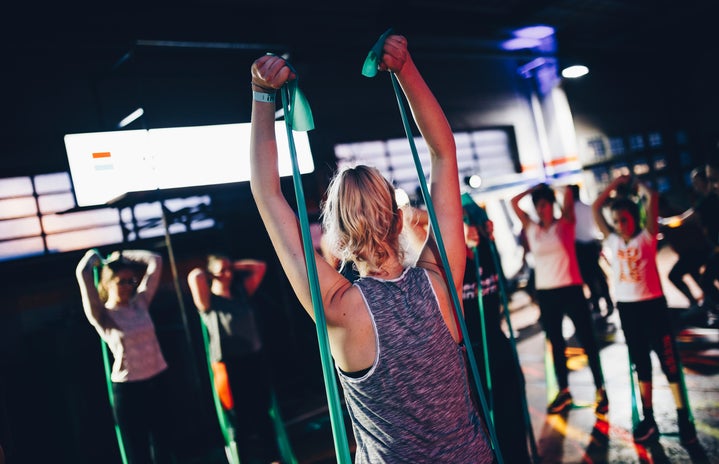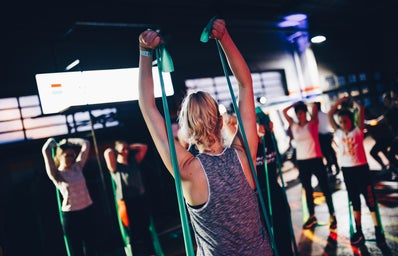I make the time to attend at least one Soul Cycle class every week. I have been sticking to this regimen for a little over a year now, and I can sincerely say it has changed me for the better. Not only does Soul Cycle function as a physical release, but it also carves out time for me to check in on my mental well-being. Despite my clear devotion to the cycling craze, it is not lost on me that many people view Soul Cycle as an obsessive workout clique. When I first tell a friend about Soul Cycle, I am usually met with something along the lines of “wait, isn’t that the indoor bike workout cult?” In all honesty, I don’t think that statement is too far from the truth.
Linguist Amanda Montell investigates the language of cults in her 2021 book “Cultish: The Language of Fanaticism.” She coined the term “cultish” to describe groups that utilize cult-like language to communicate. She argues that many everyday groups use the same language as cults to evoke emotional responses from group members. Montell claims workout groups serve as examples of this phenomenon, and she specifically sites CrossFit and Soul Cycle as key players.
I read “Cultish” prior to ever taking a Soul Cycle class, so it certainly left me weary of what actually went down within the Soul Cycle studio. Will the instructors use cultish jargon to coax me into emotional vulnerability? Does the brainwashing begin as soon as I sit on the bike?
For anyone unfamiliar, a traditional Soul Cycle class is a 45-minute cardio workout consisting of speed, resistance and arm-weight training. Like any other workout class, the instructor will guide the group through each workout set. My personal favorite thing about Soul Cycle is that most classes center around a specific musical theme. Whether it be Hannah Montana vs. Miley Cyrus or a Swiftie Sunday class, I truly can not resist riding to my favorite artists.
Within each session, there is usually at least one slower song towards the end of class truly designed for connecting with your soul. The lights dim and only a few candles are left to light the room. The instructor usually prefaces by saying “this song is for you,” meaning there are no specific instructions for how to shape your workout. It is time for you to turn your focus inward. Sometimes the instructor remains silent for the entire song, leaving you to reflect as “All Too Well” plays for the next 5 minutes. Other times, an instructor may choose to put the soul into Soul Cycle by embarking on a motivational speech. Topics can include letting go of things that weigh you down or celebrating your perseverance through difficult times. When people call Soul Cycle a cult workout group, this candlelit, slow song scene is likely what they are envisioning.
Between dim lighting, emotionally charged speeches and a room full of sweaty, cheering people, it is no surprise Soul Cycle earned the cultish label. I have no issue admitting this about my favorite exercise routine, but I do think it is important to consider the possible benefits of these cultish practices.
I recently attended a One Direction theme class, and nothing made me as excited that week as walking into a room of 20-somethings who all grew up adoring the same boy band as I did. When it was time for the candlelit, soulful moment, the instructor asked us to all sing along to “Story of My Life” as loud as we could. Sure, from an outsider perspective, a dark room packed with people screaming along to One Direction looks a little strange. However, I walked away from that class motivated to continue on with my day and spread the joy I just found.
Another central point in Amanda Montell’s “Cultish” is that groups use cultish language to combat loneliness, just like a legitimate cult would. It is common for young adults to struggle with loneliness whether it is caused by living in a social media-driven world or just the reality of growing up. In 2018, the BBC conducted a global survey of 55,000 participants to evaluate how feelings of loneliness vary among age groups. 40 percent of participants within the 16 to 24 age range reported consistent feelings of loneliness. These results placed the young adult demographic 13 percentage points higher than any other age group
I have personally experienced this loneliness pattern in my own life, and I have entered my own journey in rising above these feelings. At the end of the day, sometimes the best way to not feel alone is to be in a room full of people who are also fighting the same feelings. Whether it is through physically pushing myself or simply belting out my favorite songs from childhood, Soul Cycle offers me a space where I feel a little less alone. Maybe I drank the Soul Cycle Kool-aid, or maybe it is okay to cautiously dabble in some harmless (yet seemingly cultish) activities.


